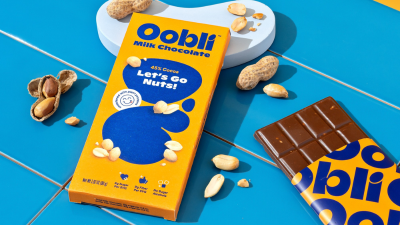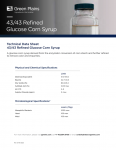Assessing the Ozempic effect: What food, beverage companies can do now to create healthier products

“Companies would make changes to their formulations for cost-savings reasons. You could look at soft drinks for instance. Why did they shift from pure cane sugar to high-fructose corn syrup? It was price. With those quantities of beverages, every little penny makes a massive difference. So, as companies look to shave costs out, they made changes to their products and improved their products. I don't see why that same mentality can't be applied to healthier ingredients, incorporating more and more healthy ingredients.”
Does Ozempic get at the root cause of the obesity crisis?
The debate over the use of GLP-1 drugs like Ozempic and Wegovy comes at a crucial point amid the obesity crisis in the US and its cost to the healthcare system.
Recent stats on obesity in the US show that obesity prevalence increased from 30.5% to 41.9%, and severe obesity increased from 4.7% to 9.2% between 1999 and March 2020, per CDC research. Adults with obesity experienced higher rates of type 2 diabetes, heart disease, stroke, and certain cancers and had $1,861 higher medical costs than those people with healthy weight, CDC added.
The World Health Organization (WHO) reported that world childhood and adolescent overweight obesity rose from 4% in 1975 to over 18% in 2016, equating to 124m children and adolescents being obese in 2016. WHO urged food industry engagement to reduce the trend, which includes reducing fat, sugar, and salt in processed foods and ensuring access to affordable, healthy, and nutritious foods.
Given the obesity crisis, some health experts and medical professionals have prescribed GLP-1 drugs like Ozempic and Wegovy to consumers to address the challenge. The drug is administered by a weekly shot and can cost roughly $1,000 a month, often without the help of insurance, Cardello noted.
Though costs are likely to come down and insurance will start to cover GLP-1 drugs, Ozempic might not be addressing the root cause of these health challenges, Cardello explained. Consumers with the highest rates of obesity, and who could benefit the most from Ozempic, are often the least engaged with making decisions to improve their health, he added.
“When you look at the two consumer segments that need the help the most [they] are also the least engaged... The two segments with the highest rates of obesity read labels the least. So, is [Ozempic] an effective strategy to help those folks? You say, ‘Well, it partially helps,’ but it's not a real solution. The same way with these drugs. These drugs require not only taking them one time but sustaining. You can't go off them. You have to sustain it.”
Can portion-control, sugar reduction solve the problem?
Regardless of what impact GLP-1 drugs might have on the food and beverage industry, companies can create better-for-you products today through reformulating with and focusing on portion-control options to improve health outcomes today, Cardello said. Though the current health crisis in the US is multi-faceted, health organizations decades ago might have put the wrong ingredient in focus, Cardello noted.
“If you really think back in the 1980s, fat was demonized... The public health community and government were saying, 'We need to go to low-fat diets.' Well, what happens is the food industry then complies, and now they have products that are very high in let's say carbohydrates, which bring in sometimes added calories and then sugars,” Cardello said. “When you really think about it in retrospect, that was the wrong one ingredient to demonize, and I think they've learned over time that really added sugars are the bigger problem."
Sugar consumption in the US has gradually increased over the decades, and more research reveals the impact a diet high in added sugar has on consumer health. Between 2022 and 2023, 11.5m metric tons of sugar were consumed, an increase from 10.2m metric tons in 2010/2011, according to Statista. However, the rate of sugar consumption might be moderating as the 2023/2024 amount is estimated to hold steady at 11.5m metric tons.
Food portions have also increased in size over the years, which is exacerbating the problems, Cardello noted. However, the industry has rolled out innovation to pack sizes in recent years, like Frito-Lay’s bite-size chip format, and companies and trade groups are making commitments to deliver on portion-control products, Cardello said.
The National Confectioners Association, with its Always a Treat campaign, committed that 50% of its single-serve items will be 200 calories or less, and 49.8% of its member's single-serve items achieved that goal in 2021. Snack and candy maker Mondelēz has also pledged that 20% of its sales revenue will come from portion-control products by 2025, which “is a big deal,” Cardello said.
While the CPG industry has seen innovation in sugar and portion control, the foodservice industry hasn’t been as quick to change, Cardello explained. Restaurant entrees, sides, and desserts have increased by 226% between 1986 and 2016, per a study published in the Academy of Nutrition and Dietetics.
“Portion sizes have gone up pretty substantially over the last few decades, and I'll highlight specifically the restaurant sector. Portions are up just way too much, and we see that more calories are consumed now in restaurants than they were a few decades ago, so consumers are eating more calories.”





















